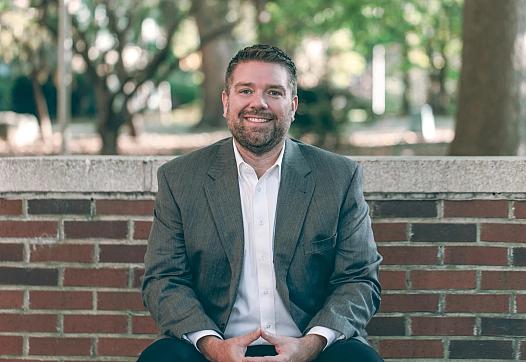NC's 'institutional bias' favors mental health care in facilities, not communities
The story was originally published by WUNC with support from our 2023 Data Fellowship.
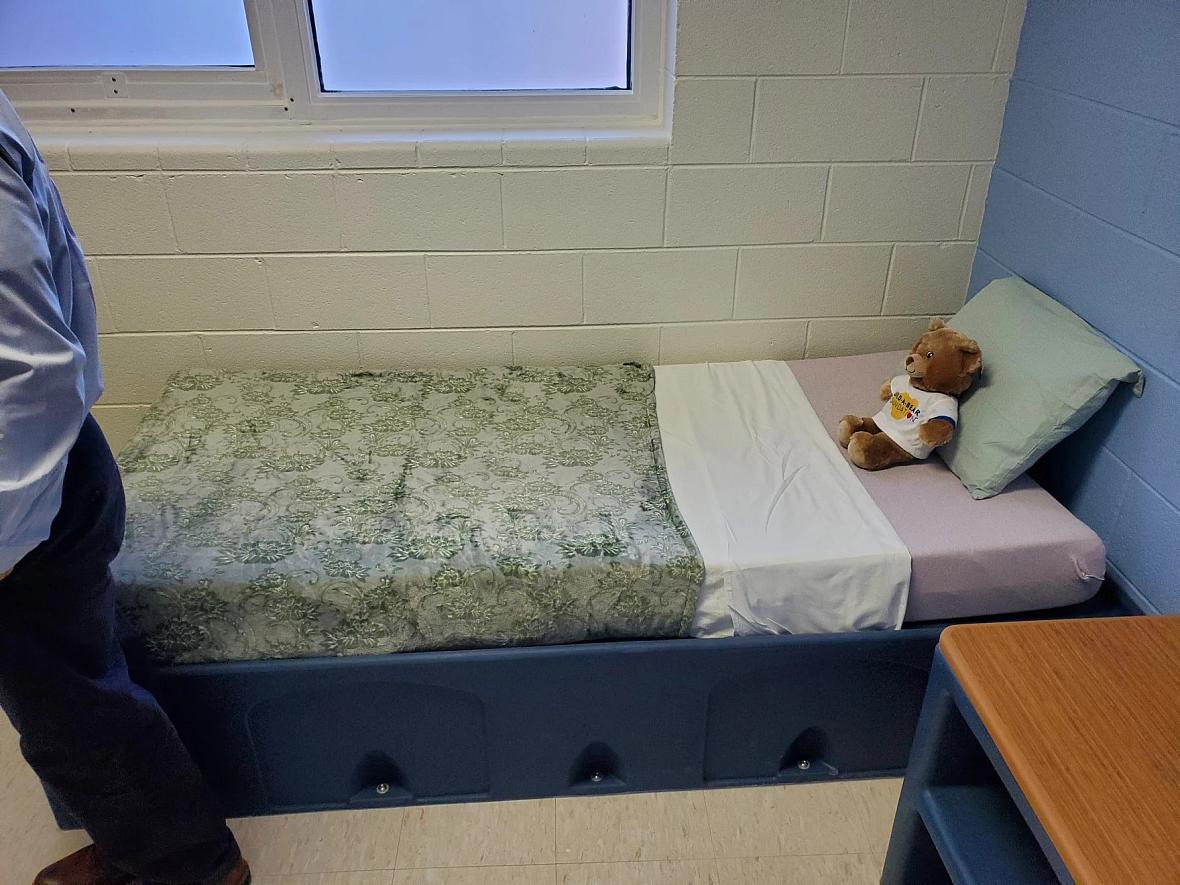
A bed in a patient room of the UNC Youth Behavioral Hospital in Butner, North Carolina.
Jason DeBruyn/WUNC
This is the third in a three-part series investigating North Carolina's psychiatric residential treatment facilities where children with complex behavioral needs are sent for care. Read Part 1 and Part 2.
North Carolina Senator Jim Burgin, a Republican from Harnett County, remembers a trip he took with Disability Rights North Carolina last spring to inspect two psychiatric residential facilities. To say he was disappointed in what he saw is an understatement.
"It was basically a warehouse for children," Burgin said. "I would not have boarded my dog in either one of these facilities."
Burgin would not name the facilities and said they have since closed. But he added he doesn't know that the ones currently in operation meet a standard he would approve.
"If we're going to put children in psychiatric residential treatment facilities, they need to be high quality. They need to give kids great service. They need to have trained people there, and they need to have intense counseling," he said. "These kids were getting about 15 minutes a week of services. A kid's not going to get better like that. And I think the ones that I saw were turning out a kid that was much worse off than when they got there."

North Carolina Senator Jim Burgin, a Republican from Harnett County, sits in his office at the Legislative Office Building in Raleigh.
Jason DeBruyn/WUNC
These psychiatric residential treatment facilities, often referred to simply as PRTFs, admit kids facing severe mental and behavioral challenges. Advocates would like to see these facilities closed completely, saying they do not provide quality care and in many cases, only add to the trauma of a child or teen with a severe psychiatric disorder. Still, they continue to operate and generate millions of dollars. North Carolina Medicaid alone pays them more than $100 million per year. They also get money from private insurance if patients have it.
Burgin said despite the conditions in these facilities, parents often reach a point where they have no other option but to send their kids there.
"And I think people get so desperate for relief that anything is better than what they're experiencing,” Burgin said. “And that's why we've got to figure this out. I mean we cannot let these children suffer like they're suffering now.”
Advocates say North Carolina has an 'institutional bias'
Yet, moving away from the current system seems unlikely, at least in the near term.
"Part of it goes back to an institutional bias in North Carolina," said Holly Stiles, an attorney for Disability Rights NC, the state's official Protection and Advocacy system that oversees facilities that care for people with disabilities. She said North Carolina's health system favors providing care in large settings.
"We have defaulted to thinking that facilities or institutions are better options," Stiles said. "That's just a mistaken belief."
Stiles and others would like to see the money PRTFs get from Medicaid directed toward care in the community and home. But those who run the health system, as well as legislators who control the purse strings, say these residential facilities do play an integral role.
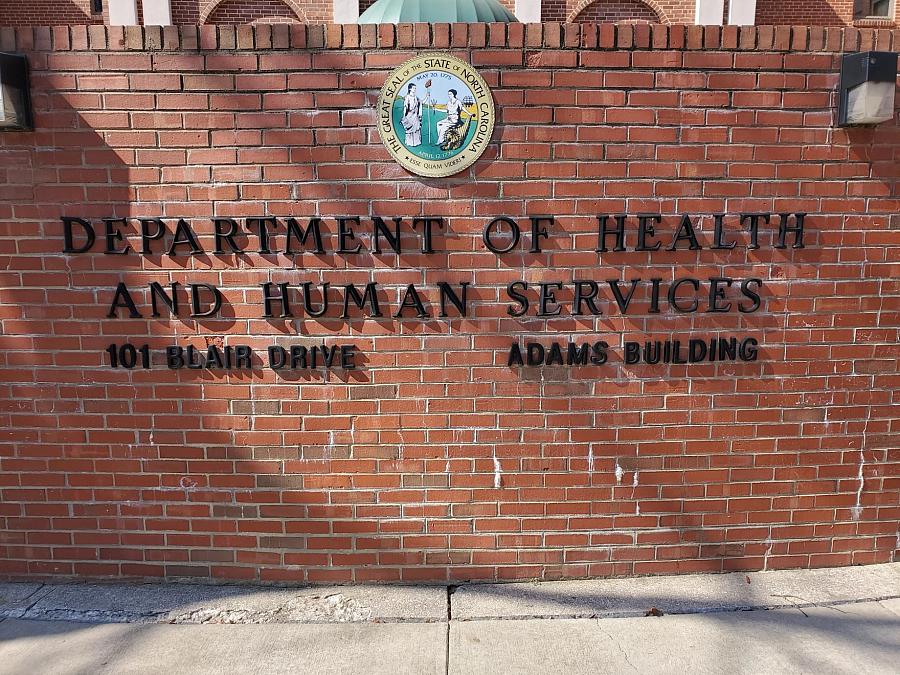
A sign at the North Carolina Department of Health and Human Services office complex at Dorothea Dix Park
Jason DeBruyn/WUNC
North Carolina Representative Sarah Crawford, a Democrat from Wake County, knows more about the mental and behavioral health space than many other legislators. She sits on the House Health committee and is the CEO of TLC, founded as Tammy Lynn Center, which provides care for people with developmental disabilities. Crawford sees treatment as an all-of-the above approach.
"And there are concerns that I have if you just completely dismantle the system," she said.
Crawford said she hears from parents of children with severe mood disorders who are at their wits end trying to find care and, in some cases, live with a teen who is physically dangerous.
"They are in fear for their lives," she said. "They're locking their doors and they cannot find a bed for their individual. It is not safe for that individual. It is not safe for the family. And in some cases, it may not be safe for the community … and sometimes wraparound supports in the home is not enough."

By "wraparound," she’s referring to a team-based approach that helps children in crisis by connecting them not only with medical providers, but also with people they trust in the community. In response, Stiles, of Disability Rights, said there would be more effective wraparound and community care if the state funded those services at higher levels.
"We always find the money to pay for PRTF. We always find that money," she said. "So I know, if we were equally committed, we could find the money for community services."
Even to the extent that some mood disorders are so severe that they require an institutional stay, UNC School of Social Work researcher Paul Lanier said that's not the majority of cases in North Carolina. Lanier's research shows nearly half of children admitted to a PRTF come with a diagnosis of Disruptive Behavior Disorder, a condition he said can be treated outside of an institution.
"This isn't like a very confusing, hard to understand mental disorder," he said. "This is related to a child’s behavior that with appropriate structures in place and supports for the family, generally can be handled in the home and community."
Mental health needs of teens has grown more 'complex'
Health leaders say the need right now is greater than it's ever been, and therefore the state still needs PRTFs. According to the state health department, more than 50 children sleep in emergency departments each week because there isn't the right kind of care for them.
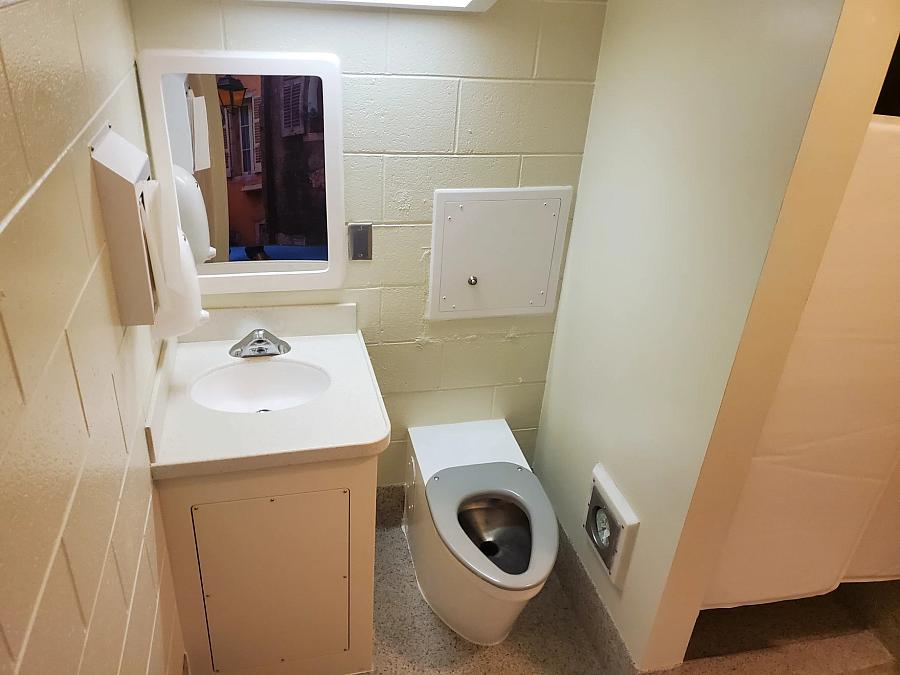
A bathroom in a patient room of the UNC Youth Behavioral Hospital in Butner, North Carolina.
Jason DeBruyn/WUNC
Kelly Crosbie, director of the health department's Division of Mental Health, said the state needs this high level of care for the high level of need.
"We do find ourselves in a crisis, especially after Covid," she said. "The children that are ending up in PRTF or in emergency rooms waiting for treatment, are more complex than we've ever experienced."
And that, she said, means they need PRTF or even inpatient care.
"Oftentimes when they end up in our system it is in a crisis," she said. "It truly is in a crisis. And it's a problem that's been building for a very, very long time."
In those moments of crisis, health experts say PRTFs or inpatient care keep children out of hospital emergency rooms. Dr. Jim Bedford, who works for the UNC Youth Behavioral Hospital in Butner, said that facility, as well as PRTFs, are better places of care than hospital emergency departments.
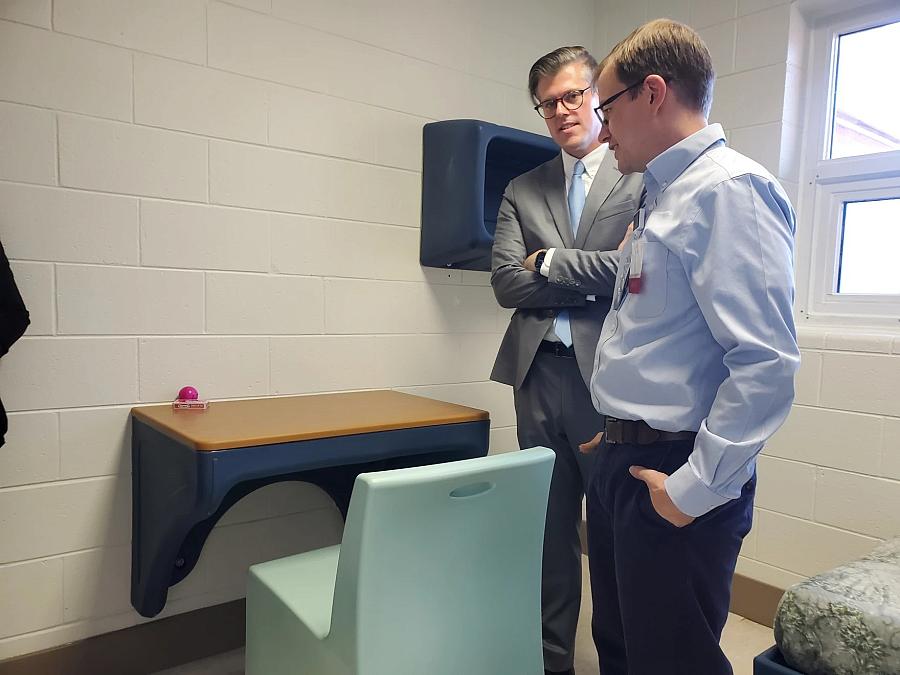
North Carolina Department of Health and Human Services Secretary Kody Kinsley, left, and Dr. Jim Bedford from the University of North Carolina Youth Behavioral Hospital in a patient room of the hospital in Butner
Jason DeBruyn/WUNC
"Those emergency room settings are holding areas, and many children experience that as additional trauma rather than additional treatment or help," he said.
Bedford said if a teen tries to commit suicide, he or she needs to move out of the ER, but still requires more intense care than what's currently offered in most communities.
"Just like you don't want when you have a heart attack to stay in the emergency room for days, it doesn't make sense to stay in the emergency room for days after a suicide attempt or developing a manic episode or psychotic symptoms or something like that," he said.
Advocates and providers agree on one thing: young people in North Carolina need more and better mental health care. The state’s recent expansion of Medicaid is a step in the right direction. But it will require continued investments to help the state's most vulnerable children.


